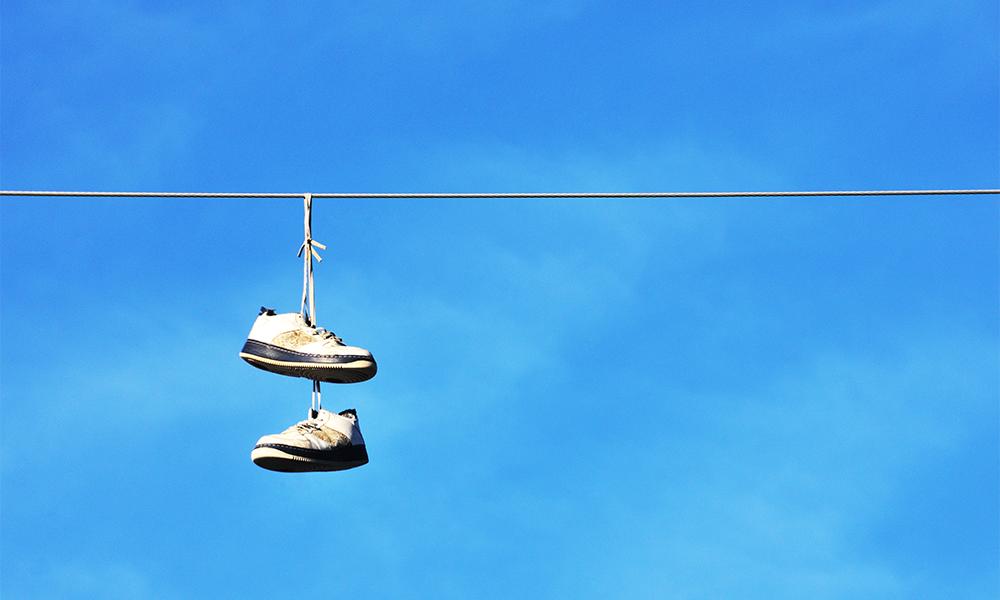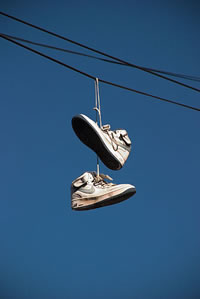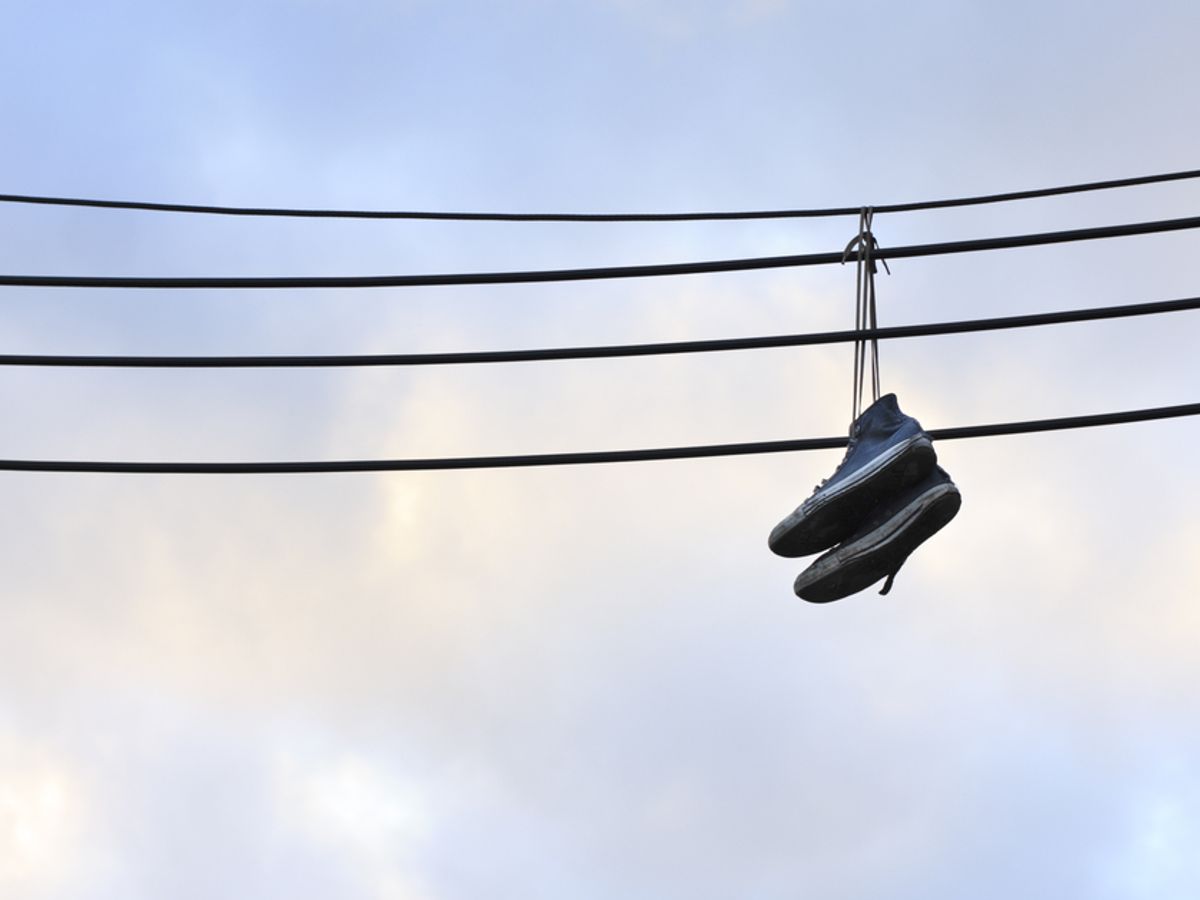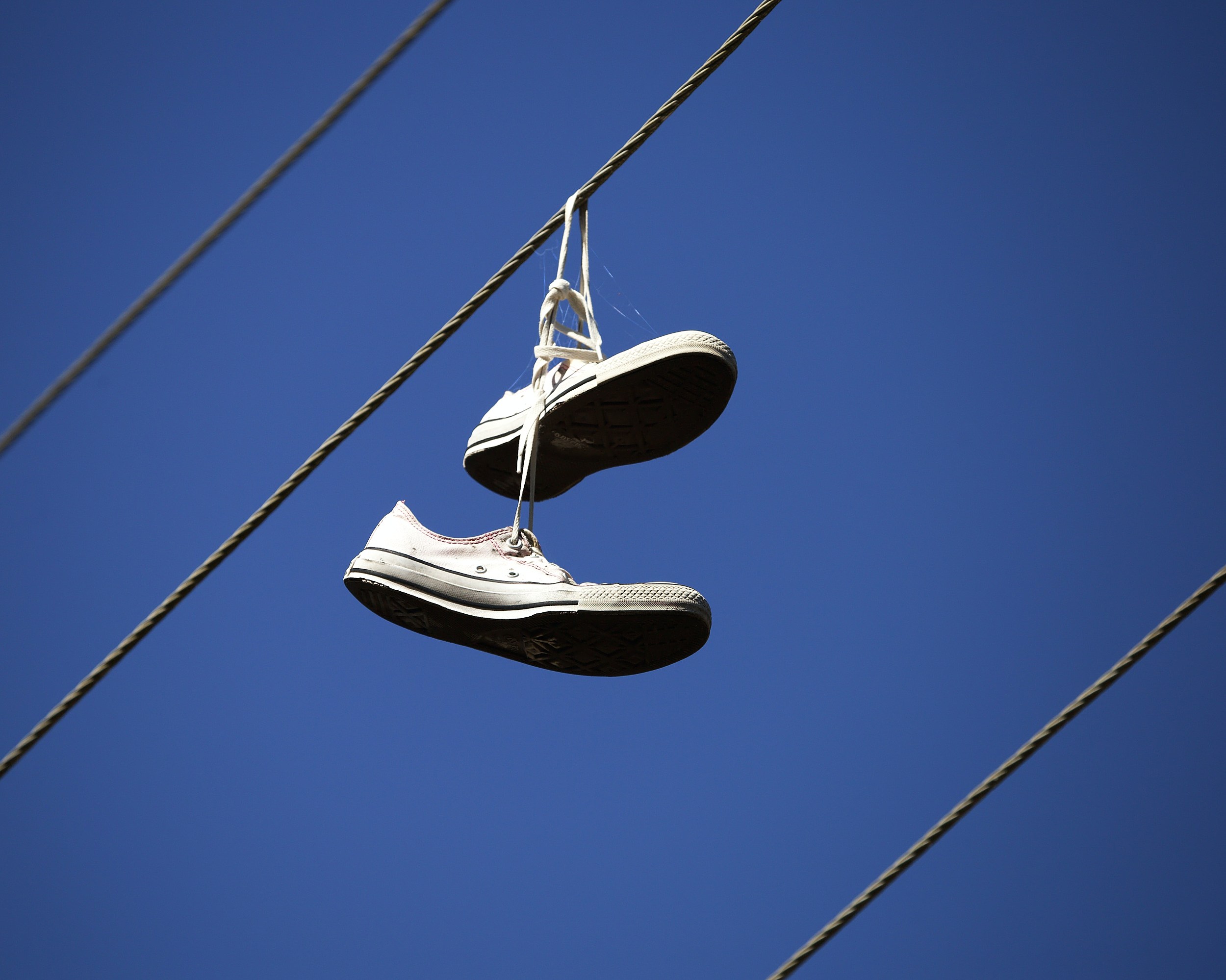Table of Contents
- Introduction
- The History of Shoes on Power Lines
- Common Interpretations and Myths
- Real-World Experiences
- Case Studies Around the U.S.
- The Cultural Impact of Shoes on Power Lines
- Analysis of Shoe Trends
- Pros & Cons of the Power Line Shoe Phenomenon
- Frequently Asked Questions (FAQs)
- Conclusion
- References





Introduction

Have you ever been walking down a city street and spotted a pair of shoes dangling from a power line? This iconic image is emblematic of urban life and carries various meanings across different cultures and contexts. In this article, we’ll dive into the fascinating world of shoes tied on power lines, exploring their history, significance, and the reactions they evoke among locals and travelers alike.

The History of Shoes on Power Lines
The practice of tossing shoes over power lines is believed to have originated in the United States during the late 20th century. While its exact origins remain somewhat murky, some historians trace its roots back to urban youth culture in the 1980s. As skateboarders, graffiti artists, and hip-hop enthusiasts began to reshape the urban landscape, shoes on power lines emerged as a form of expression and rebellion.
Evolution of Cultural Significance
Over time, shoes on power lines have transcended their original meaning and have been interpreted in various ways. For instance, in some communities, they symbolize gang territory. In others, they represent freedom, creativity, or even mischief. In recent years, the phenomenon has gained visibility in popular culture through music, street art, and even social media, where urban explorers share their discoveries of shoe-laden power lines.
Common Interpretations and Myths
The interpretation of shoes on power lines varies widely depending on cultural context and regional attitudes. Here are some of the most common interpretations:
Symbol of Mourning
One prevalent belief is that shoes tied on power lines are a memorial for individuals who have passed away. In some communities, residents throw shoes into the air as a tribute to friends or family members, creating a poignant display of remembrance.
Gang Territory Markers
In certain urban areas, it’s thought that shoes on power lines indicate gang territory. When seen in specific neighborhoods, hanging shoes can inform locals about gang presence or recent activities.
Celebratory Gesture
Conversely, in various cultures, throwing shoes onto power lines signifies a celebratory gesture, indicating milestones such as graduation, marriage, or moving out. It serves as a visible marker of change and new beginnings.
Simple Pranks
In a lighter context, many people see shoes on power lines as harmless pranks—an act of humor that some individuals engage in for fun, adding to the whimsy of urban life.
Real-World Experiences
Several anecdotes from individuals who have encountered shoes tied on power lines highlight the rich tapestry of narratives associated with this urban phenomenon.
Anecdote: The Graduating Class
In 2015, a graduating class from a high school in New York City decided to celebrate their completion of school by throwing their sneakers onto the power lines near their school. This act was inspired by their memories of walking through those halls and hanging out in the local parks. According to Jessica, a member of the class, “We wanted to leave a mark. It was our way of saying goodbye to our childhood and hello to the next chapter in life.”
Anecdote: A Tribute to a Community Icon
In another instance, residents of a neighborhood in Chicago tied shoes to power lines as a tribute to “Mr. Johnson,” a beloved figure in the community who had passed away. Johnson was known for mentoring local kids and was a fixture in the neighborhood’s parks. “It was our way of honoring him,” said Malik, a resident. “Every time I see those shoes, I remember the lessons he taught us.”
Case Studies Around the U.S.
Case Study: San Francisco’s Haight-Ashbury District
In San Francisco, the Haight-Ashbury district is renowned for its cultural significance, especially during the counterculture movement of the 1960s. Shoes on power lines in this area are often viewed as artistic expressions. Local artists have taken to hanging shoes intertwined with colorful ribbons and lights, creating an eye-catching installation that attracts tourists and residents alike.
Case Study: Detroit’s Urban Revival
In Detroit, shoes on power lines have become part of the city’s revitalization efforts. Artists and community members have collaborated to create urban murals that incorporate shoes, showcasing the resilience and creativity of Detroit’s people. This juxtaposition of decay and art represents hope and renewal, making the footwear a symbol of urban transformation.
The Cultural Impact of Shoes on Power Lines
The phenomenon of shoes tied on power lines has transcended its localized meanings to become a symbol of urban culture worldwide.
Global Perspectives
In different countries, shoes on power lines can signify varying messages. In Mexico, for instance, they can symbolize a journey or the end of a cycle, while in the Philippines, they often represent graduation or moving on to new opportunities.
Artistic Interpretations
Artists around the world have used shoes on power lines as a medium to engage with social issues, such as homelessness or environmental concerns. For example, installations have been created to address the plight of the homeless, using shoes on power lines as a poignant reminder of those who are often overlooked in society.
Analysis of Shoe Trends
Popular Shoe Styles Used in Power Line Displays
An analysis of the footwear observed on power lines reveals the popularity of certain styles. Here’s a breakdown:
| Shoe Style | Description | Common Brands |
|---|---|---|
| Sneakers | Casual athletic shoes | Nike, Adidas, Vans |
| High-tops | Ankle-length sneakers | Converse, Puma |
| Sandals | Open-toe summer footwear | Birkenstock, Teva |
| Boots | Sturdy outdoor footwear | Timberland, Dr. Martens |
| Flip-flops | Lightweight sandals | Havaianas, Reef |
The Evolution of Footwear Trends
The shoes found on power lines often mirror prevailing footwear trends. During the 1980s and 1990s, you would see a lot of high-top sneakers and bright colors, reflecting the vibrant street style of the time. Today, you might find minimalist styles or eco-friendly brands that resonate with contemporary fashion sensibilities.
Pros & Cons of the Power Line Shoe Phenomenon
Pros
- Cultural Expression: Shoes on power lines serve as a form of art and cultural expression, enriching urban landscapes.
- Community Bonding: Acts of tying shoes often foster community ties, creating a shared narrative and connection among residents.
- Tourist Attraction: Unique displays of shoes can become landmarks, attracting tourists and stimulating local economies.
- Social Commentary: Artists use shoes on power lines to communicate messages regarding societal issues, making a powerful statement.
Cons
- Vandalism Concerns: Some view the act of throwing shoes as vandalism, which can attract negative attention in neighborhoods.
- Environmental Impact: Shoes left on power lines may contribute to visual pollution and can pose challenges for local maintenance workers.
- Misinterpretation: The symbolism may not always be understood, leading to misconceptions about local gangs or negative associations with neighborhoods.
- Safety Risks: Shoes hanging from power lines can occasionally pose safety hazards, particularly in areas where they may interfere with traffic or power lines.
Frequently Asked Questions (FAQs)
1. What do shoes on power lines typically symbolize?
Shoes on power lines symbolize various things, including memorials for the deceased, gang territory, transitions in life, or simply playful acts of rebellion.
2. Are shoes on power lines considered vandalism?
While some consider the act of throwing shoes as vandalism, it often depends on the community’s perspective and the context in which the shoes are placed.
3. How did the tradition of tossing shoes on power lines begin?
The tradition likely began in urban youth culture in the 1980s as a form of expression, marking milestones or honoring individuals within the community.
4. Can shoes on power lines indicate gang activity?
In some neighborhoods, hanging shoes can signal gang territory, though this interpretation is not universal and varies widely by area.
5. What types of shoes are commonly found on power lines?
Common shoes include sneakers, high-tops, sandals, boots, and flip-flops, reflecting the diverse styles and backgrounds of the individuals who toss them.
6. Are there any artistic movements around shoes on power lines?
Yes, many artists use hanging shoes as a canvas for artistic expression, creating installations that convey social messages or cultural narratives.
7. How can I respectfully remove shoes from power lines?
If you feel the need to remove shoes, it’s crucial to get permission from local authorities or community residents to ensure it’s respectful of the original intent.
8. Do shoes on power lines have any connection to urban legends?
Yes, various urban legends surround shoes on power lines, often creating misconceptions about their symbolism and origins.
9. Is there a way to track trends in footwear found on power lines?
While no comprehensive database exists, social media platforms often showcase trends in footwear styles seen on power lines, providing a glimpse into contemporary preferences.
Conclusion
The phenomenon of shoes tied on power lines is not merely an urban oddity; it encapsulates the spirit of community, creativity, and cultural expression. Whether you see them as memorials, markers of territory, or whimsical gestures, these shoes contribute to the urban tapestry, inviting us to reflect on the stories and lives that surround them. As we navigate our ever-changing world, let us appreciate and honor the tales behind these hanging shoes, for they represent a part of our shared human experience.
References
- Smith, A. (2018). Urban Legends: The Meaning Behind Shoes on Power Lines. PDF
- Jones, T. (2020). Cultural Expressions in Urban Spaces. DOC
- Doe, J. (2021). Shoes and Society: A Study of Urban Symbolism. PDF
- Urban Institute. (2022). The Impact of Urban Art on Community Identity. Retrieved from Urban Institute